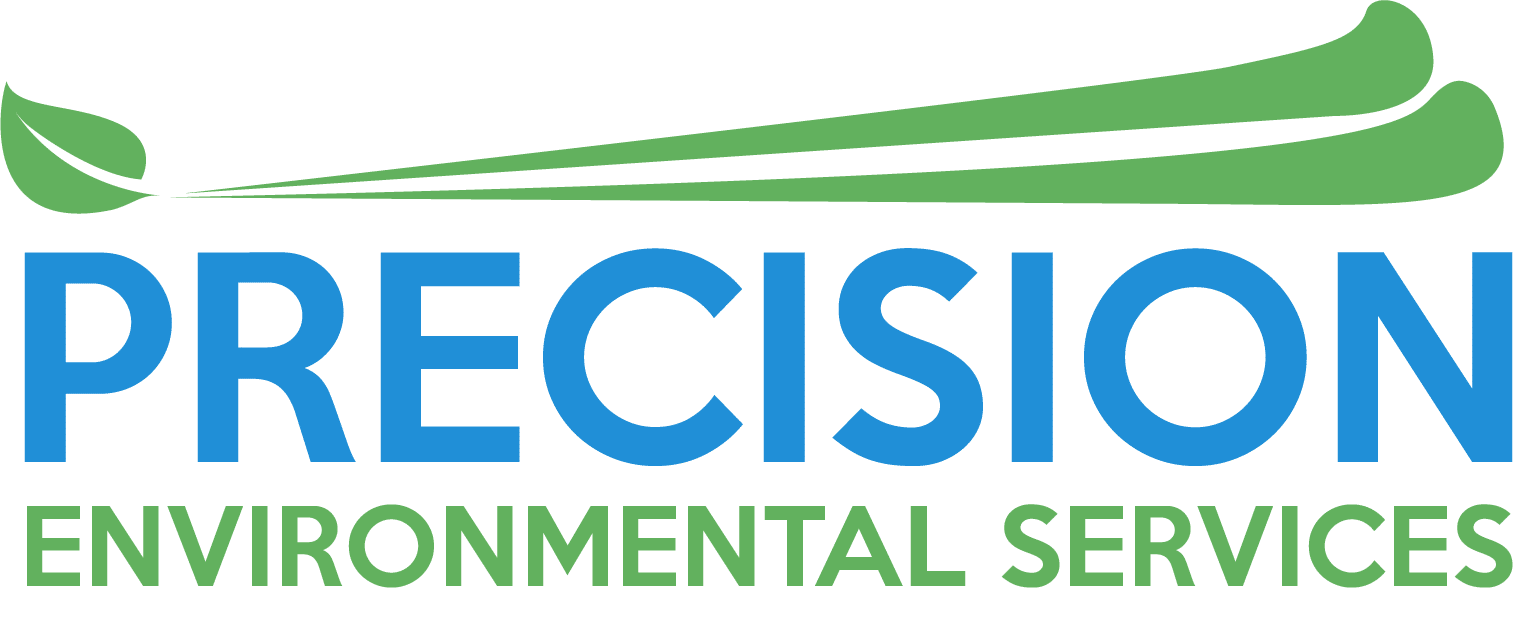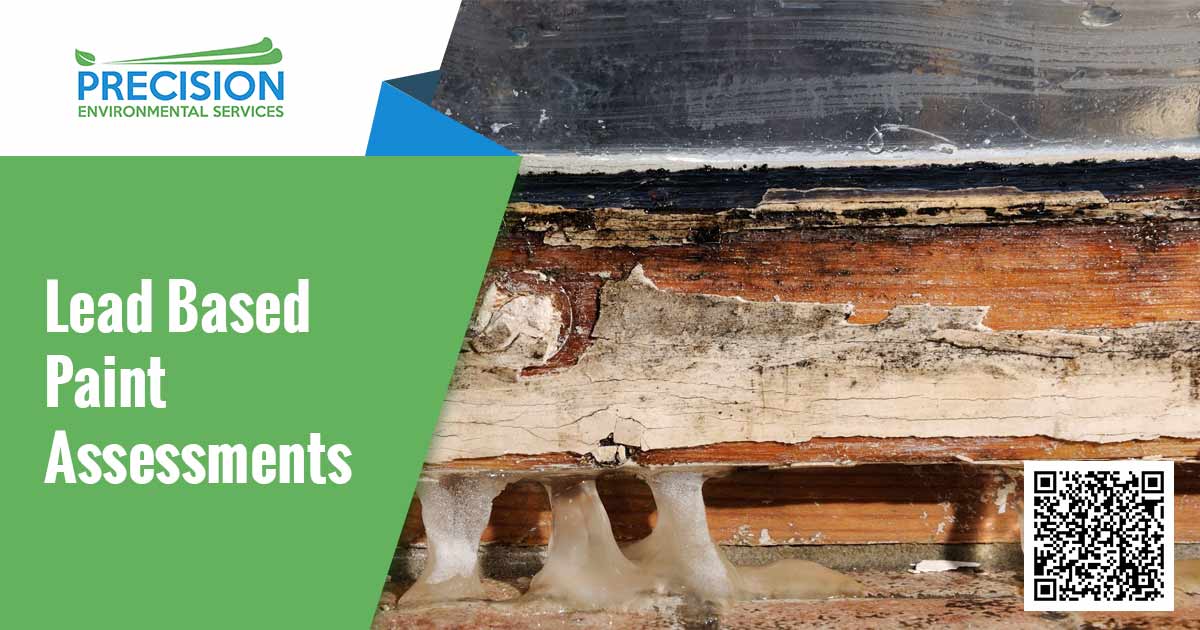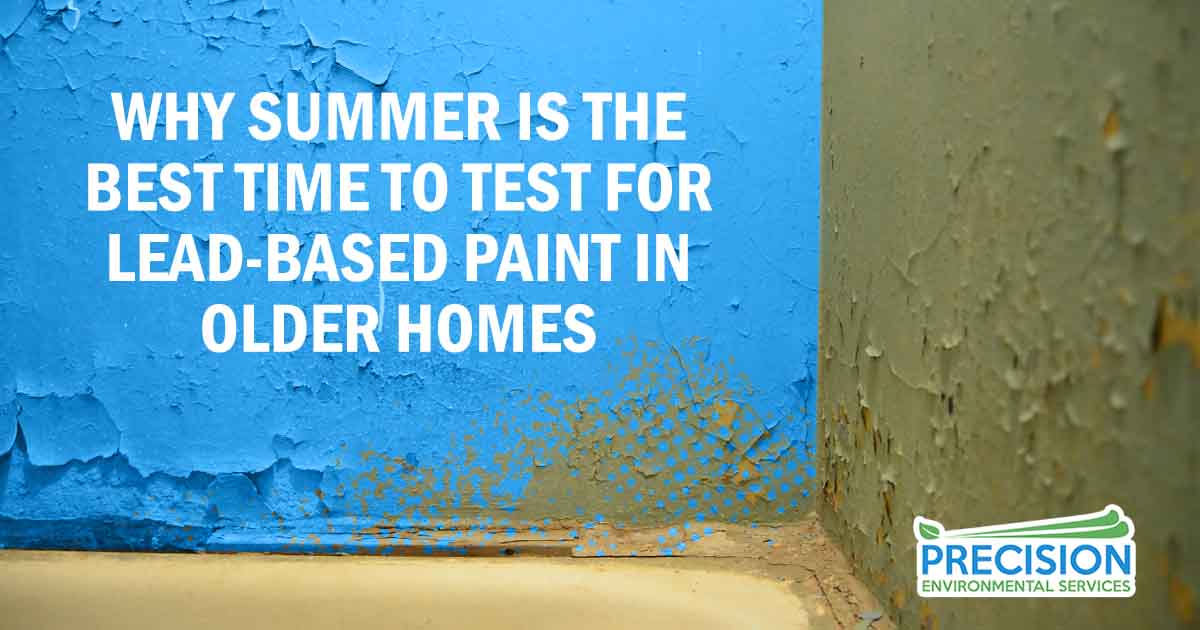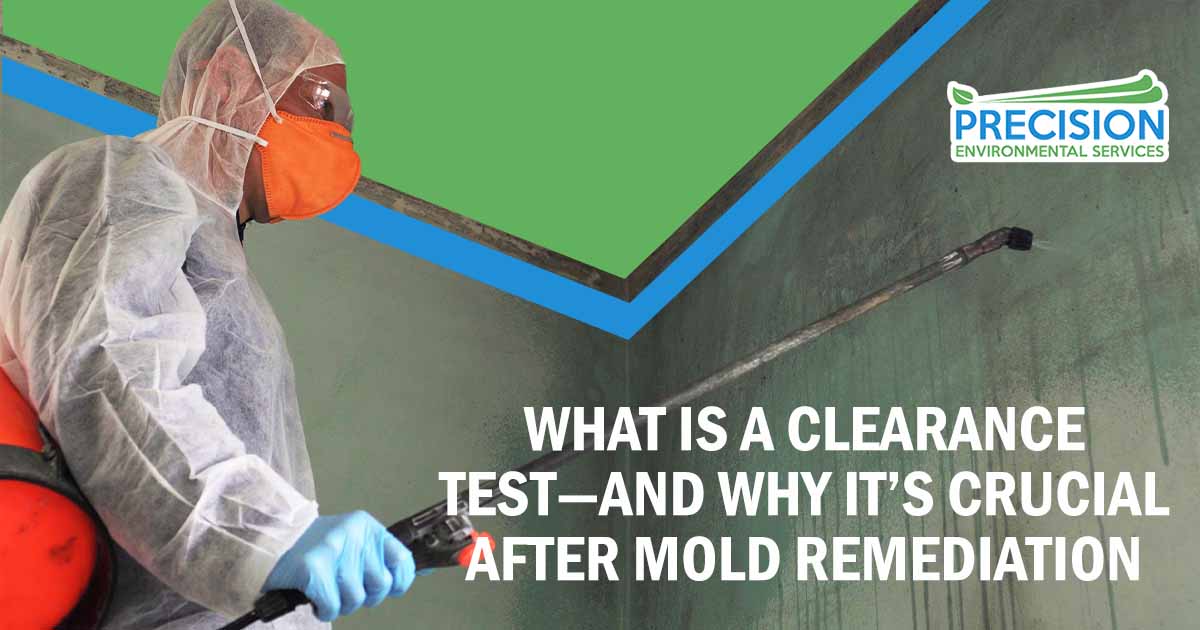Concerns have emerged over the last several decades regarding the effects of lead on mental and physical health. This has made lead a significant cause for concern among homeowners and homebuyers, especially those who currently have or are planning to have children.
During this time frame, Congress has passed laws to address problems caused by lead and lead poisoning. The United States Environmental Protection Agency EPA states that these laws address issues such as:
- Lead paint
- Lead-contaminated soil
- Lead dust
- Lead in the water
- Lead in the air
- Lead waste disposal
The goal of these laws and acts is to help control and reduce risks associated with lead. As we continue to learn more, these laws are reassessed and updated in a continuing effort to combat the effects of lead exposure.
Identifying Lead in Residential and Commercial Buildings
One of the primary sources of lead exposure is lead paint. In older homes and buildings, it’s not uncommon to find lead painted walls, stairs, or window sills. Generally, areas with a lot of foot traffic, contact, or movement are far easier to disturb and present the greatest lead risk. For example, banisters are often touched quite frequently. If this surface was coated with lead paint, then it becomes a hazard.
Windows are another high-exposure site as they are continuously opened or closed. In addition, their exposure to sunlight, drafts, weather, condensation, and more can result in chipping or peeling paint which can further increase lead contamination risks.
Most people don’t think about it, but outdoor living areas can also pose lead based paint risks. Here, weathering and moisture are much more damaging. The breakdown of lead-based paint can then contaminate the soil. This poses a substantial health risk for families with young children who play outside because they could inadvertently ingest lead dust or paint chips that were disturbed by their play activities or even just a breeze.
When is Lead-Based Paint Testing Needed?
Lead-based paint testing or inspection is commonly required when purchasing commercial buildings or multifamily buildings. Many times, it’s also needed prior to rehabilitation, renovation, or demolition of a building. This is because any type of renovation or demolition activity could disturb lead paint or create leaded dust. It’s very important to perform a lead based paint test prior to these activities.
Homes Built Pre-1978
The buildings that are the most at risk of having lead-based paint are those constructed prior to 1978. Thankfully, in 1978 lead paint was banned from residential use. While this was a great step for the future, it didn’t really address the structures already coated with the dangerous paint.
In general, lead paint isn’t a problem until it’s disturbed. However, we’re now finding that lead paint is not standing the test of time and often degrades due to weathering or wear. This means that homeowners who live in older homes need to be very mindful of the risk.
It’s generally advised that it’s best not to try to remove lead paint yourself. Most individuals don’t have the proper safety gear, knowledge, and lead training to safely do so. In fact, homeowners could end up doing more harm than good by disturbing the area. This is why it’s vital to have lead based paint inspections in older buildings when damaged or peeling paint is found or if the building will be occupied by children. Children are the most sensitive when it comes to lead poisoning. In fact, many lenders require lead paint inspections as part of their due diligence when it comes to financing.
Types of Lead Based Paint Testing and Inspections
Lead inspections are typically tailored to the client’s needs and the characteristics of the building. However, these are the three most common types of lead paint testing and inspection.
- Lead Risk Assessment: A comprehensive evaluation of potential lead hazards. Lead risk assessments generally include lead-based paint, lead dust, lead water and soil samples.
- Lead-Based Paint Inspection: X-ray fluorescence testing or XRF testing provides direct results on-site and avoids the need for laboratory analysis and potentially disturbing any areas in question. Paint chip testing provides definitive results accepted by OSHA. Swab testing tests for potential lead dust. Swab testing is generally required on HUD (The Department of Housing and Urban Development) inspections for any building constructed prior to 1960.
- Lead Clearance Inspection: Clearance testing on all lead abatement work must be completed by a certified lead-based paint inspector or certified risk assessors. Clearance refers to visual and quantitative environmental evaluation procedures in order to determine if lead-based paint hazards are still present in an area after hazard control, remediation, or maintenance is complete.
What to Expect from a Lead Paint Inspection
The EPA has strict regulations lead inspectors must follow. Lead inspectors must also be certified. The guidelines and certification help to ensure safe practices from individuals conducting inspections. Likewise, lead risk assessors require lead risk assessor certifications. Also, any contractors working in homes with lead materials must be EPA trained. Failing to abide by any of these requirements results in severe penalties and fines.
Of the three types of lead inspections listed above, most often you’ll find yourself in need of either a lead risk assessment or a lead-based paint inspection. The third type of inspection is what happens after you’ve already found lead in your home, and you’ve had it professionally removed.
Lead Risk Assessment Texas
The purpose of a lead paint risk assessment is to inform property owners about any lead paint hazards -currently present. The assessor will determine the seriousness of the issue by analyzing lead levels in an on-site investigation. A lead paint risk assessment also includes an action plan to help manage lead hazards moving forward.
Lead-Based Paint Inspection
With a Texas lead inspection, the lead inspector checks for toxic lead paint both inside and outside the home. They’ll also examine any problem areas. If the lead paint is in good condition and is not at risk of being disturbed, then it’s possible to simply leave it alone. However, if the paint has been disturbed or is in a high traffic area or high touch area then you may want to follow up with remediation.
Why are Lead Inspections Important?
Lead can lead to lead poisoning. Lead poisoning is detrimental to small children and certain individuals who tend to have more hand-to-mouth behavior. In addition, lead absorbs very quickly into a child’s bloodstream and through higher respiratory functioning.
The Mayo Clinic identifies symptoms and risk factors for children who’ve been exposed to lead paint. The list includes but is not limited to:
- Abdominal pain
- Developmental delays
- Hearing Loss
- Irritability
- Learning difficulties
- Loss of appetite
- Seizures
- Sluggishness and fatigue
- Vomiting
- Weight loss
Taking the necessary precautions to keep your household safe is important for the well-being of your children. Lead paint assessments and inspections can help identify any problem areas and help you create an action plan for the safety of your family.
If you have any questions about the safety of your home including lead poisoning prevention, asbestos testing, mold testing, air quality testing, and more contact the professionals at Precision Environmental Services at (940) 597-2673 for more information on how we can make your home a safe place for you and your family.
Frequently Asked Questions
Do home inspections include lead paint inspections?
While some home inspectors are certified and will look for lead paint, not all can. Be sure to ask if your home inspection includes a leadbased paint inspection. If it does, ensure that the inspection is done by a certified professional. If it is not included, you may want to ask for a lead paint inspection prior to purchasing the house.
How do you know if it is lead based paint?
Lead paint has a few telltale signs as it begins to degrade. When lead paint begins to break down it does what is known as alligatoring. Essentially, the paint begins to resemble scales like those you would see on an alligator. Most homeowners paint over the peeling and cracking paint so sometimes you have to look a little harder. For example, search for the alligatoring paint in closets, windows, and along baseboards.
If you’re concerned about lead paint, you can purchase lead paint tests from your local hardware store. It is very important that you keep in mind that disturbing lead paint is what can lead to problems. You want to disturb as little paint as possible. The way one popular lead based paint testing kit works is by rubbing one end of the test that contains a solution onto worrisome surfaces. If the solution turns pink, then lead is present. However, this test will also stain the wall and it is limited to the top surface. So, if your lead paint has been painted over, it won’t provide an accurate answer.
The best way to know if you really have a lead paint problem or not is to call a professional who is certified and trained to search for lead hazards.






